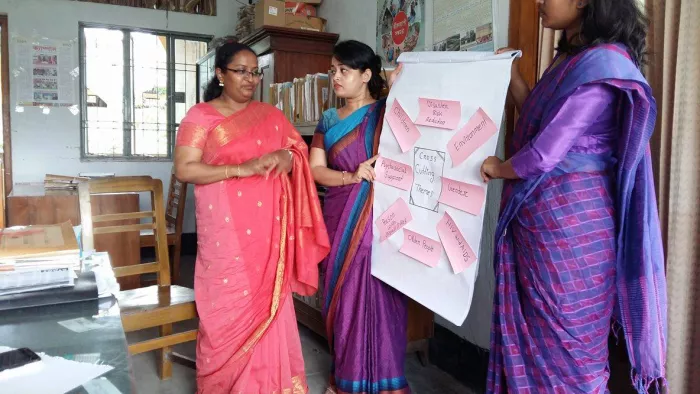ABOUT THE PROJECT
When humanitarian disasters happen, aid needs to be rapidly brought to the centre of the crisis zone and concentrated there until the situation has stabilised. Surge capacity measures how quickly and effectively this surge of temporary aid can be brought to a disaster zone, and how smoothly it can be scaled down again afterwards.
Worldwide humanitarian disasters are becoming more frequent and more complex, creating a growing demand for rapid disaster relief. Aid organisations need to increase the scale of their response to meet this need more effectively and efficiently.
However, international aid agencies are already stretched to their limits and struggling to respond. At the same time, national and local agencies receive less support than international agencies, which holds them back from achieving their potential. In addition, aid organisations often compete with each other to be first on the scene and for access to resources when disaster strikes. This compromises the quality of aid and how it is coordinated.
To overcome this, we knew that approaches to surge capacity need to be more collaborative. International aid agencies must work together to share learning and resources, and connect with national and local agencies who often have better information on the ground.
WHAT DID THE PROJECT DELIVER?
The project created ‘shared rosters’ that drew on skills and resources from across the sector. Sharing knowledge maximised our resources and helped target aid more effectively, helping national and local agencies play a greater role and reducing the strain on international agencies.
The project also created platforms at regional and national level to build strong links across partners in the project. These platforms pilotted new ways to make surge capacity more collaborative. They shared good practice, learning and resources, and organised training. Evidence was gathered to show the international community why collaborative approaches work better.
AIMS OF THE PROJECT
Over the three years it was funded, the project aimed to:
1. Strengthen national and regional surge systems to work better with international systems.
2. Help organisations move from focusing on their individual surge capacity to working with others to build everyone’s capacity.
3. Bring external stakeholders like the United Nations, private companies and universities on-board to explore how they can help.
ASIA REGIONAL PLATFORM
The Asia Regional Platform brought together seven international aid agencies in Asia. By fostering collaboration and trust, the platform made best use of available surge resources in the region and improve the effectiveness of responses to disaster-affected communities.
LATEST VIDEO
Watch the video below from the launch of On Call, an innovative emergency response roster created through the Transforming Surge Capacity project. The roster aimed to improve emergency response in the Philippines by linking local, national and international responders more effectively.
WHO WAS INVOLVED?
The project was led by ActionAid and backed by 11 partners including: Action Contre le Faim, Christian Aid, the Catholic Agency for Overseas Development, CARE, International Medical Corps, Islamic Relief, Muslim Aid, Plan International, Save the Children and Tearfund.
Several technical partners helped with delivery, providing experience, advice and frameworks that guided action. These included Communicating with Disaster Affected Communities (CDAC) Network and the Core Humanitarian Standard Alliance (CHS Alliance).
WHERE DID THE PROJECT TAKE PLACE?
The project took place at national, regional and international levels with ActionAid Pakistan and Christian Aid Philippines as the national actors. The regional platform was led from Bangkok and Delhi by Plan International. The international platform was led by ActionAid.
Other partners included:
www.savethechildren.org.uk
www.chsalliance.org
cafod.org.uk
www.muslimaid.org
www.imcworldwide.com
www.actionagainsthunger.org.uk
www.islamic-relief.org.uk
www.careinternational.org.uk
www.cdacnetwork.org
www.tearfund.org
FUNDING
The three year project was funded with £2,482,824 from UK Aid, part of the Disaster and Emergencies and Preparedness Programme (DEPP).
FIND OUT MORE
Transforming Surge Capacity One Pager
CHS Alliance – Transforming Surge Capacity Project
Transforming Surge Capacity Brochure
The State of Surge Capacity in the Humanitarian Sector
Nepal Earthquake 2015 - Review of surge practices
Transforming Surge Capacity online HR platform
Asia Regional Platform

